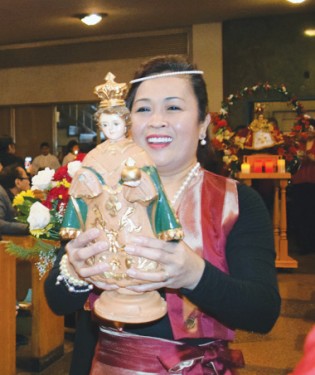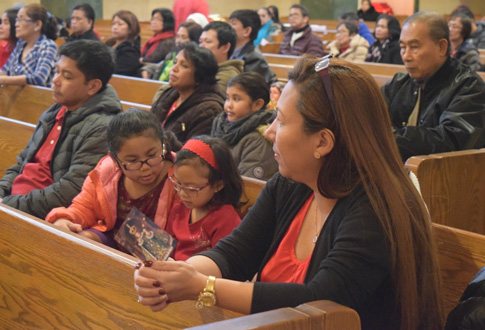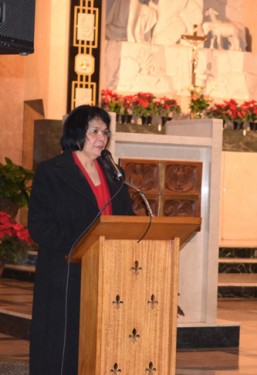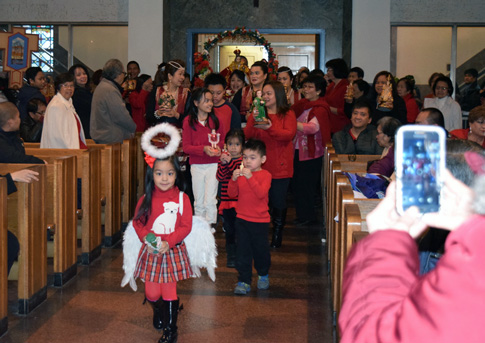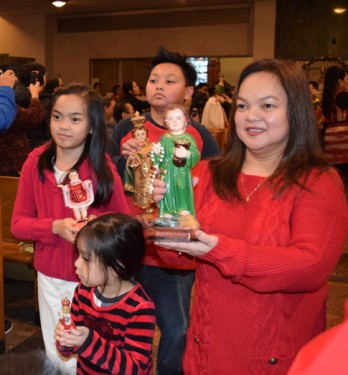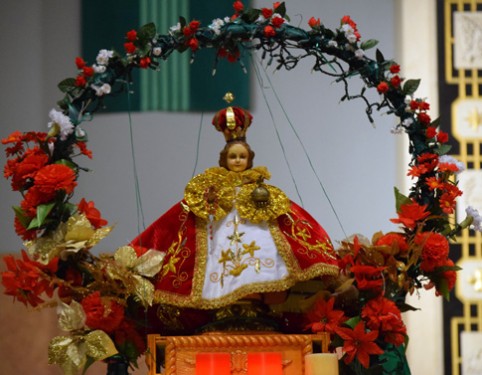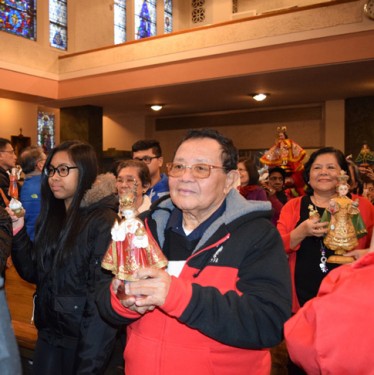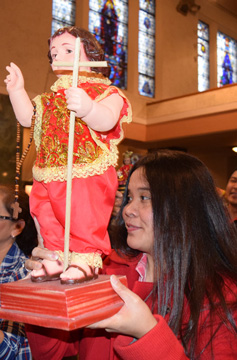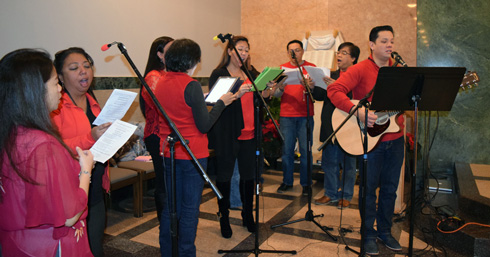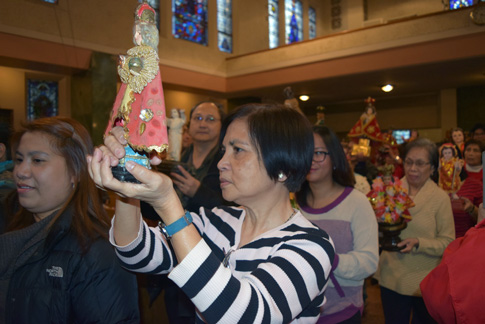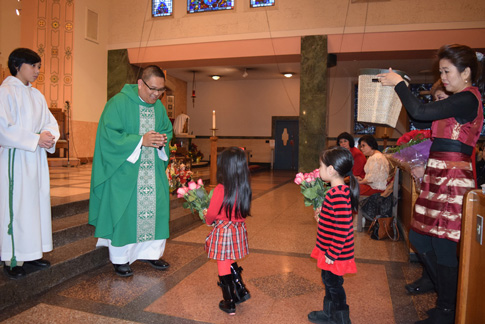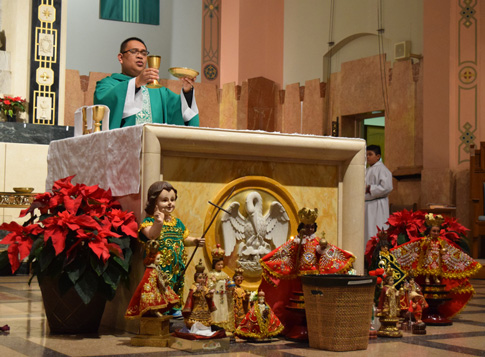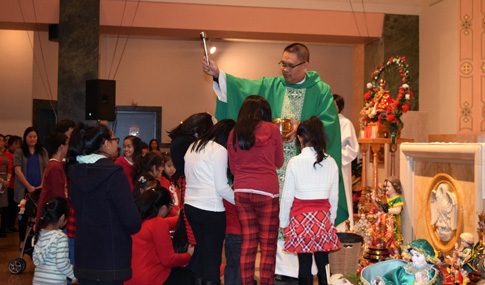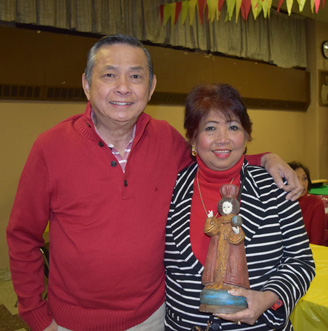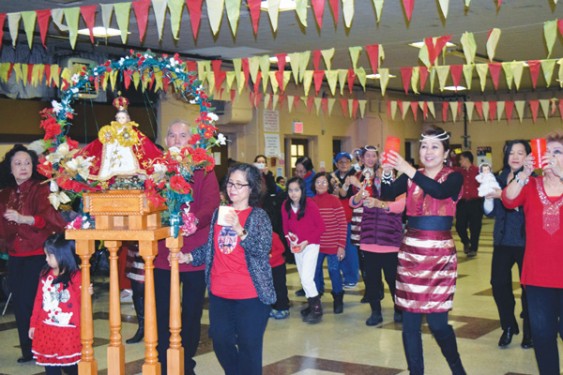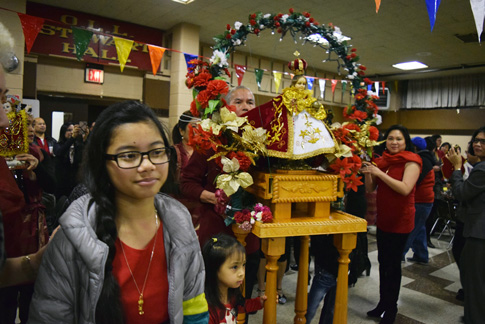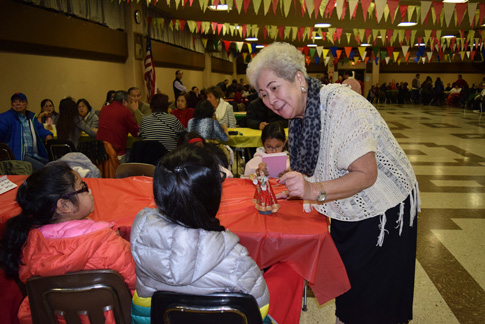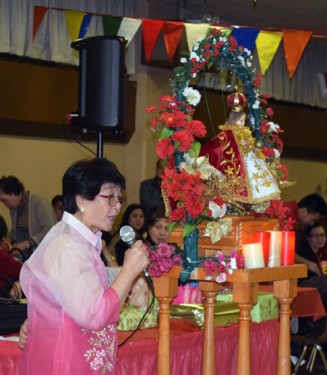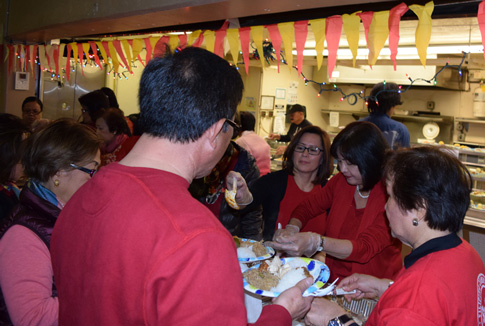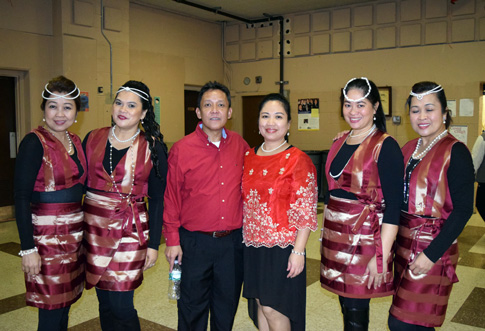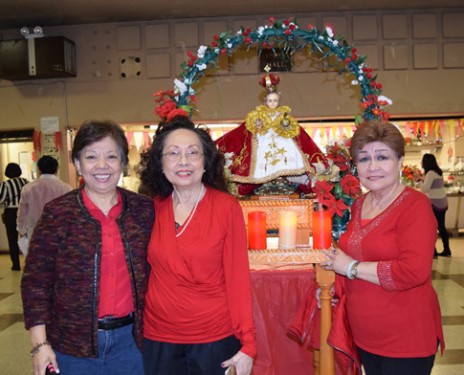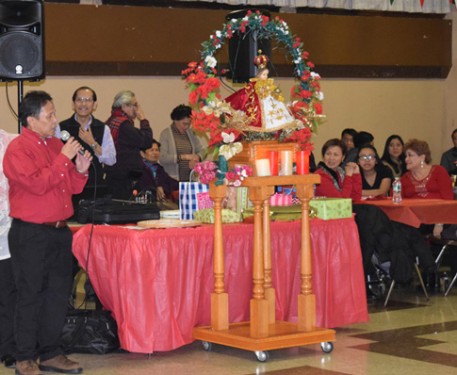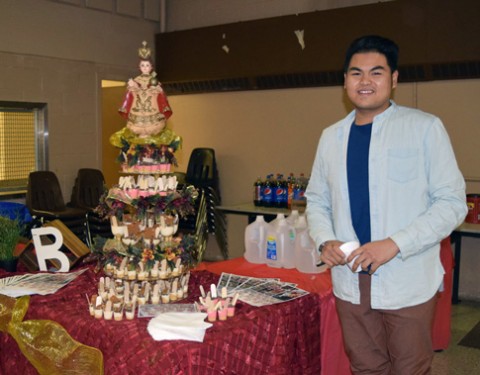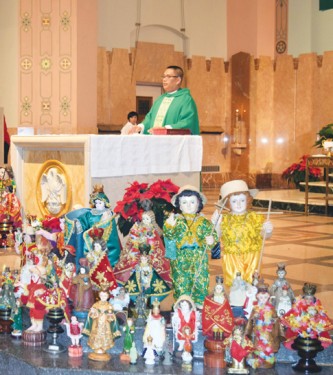
Hundreds of parishioners congregated at Our Lady of Lourdes Church, Queens Village, to celebrate the feast of the Holy Child Jesus, known as Santo Niño.
The image of Santo Niño de Cebu “has been an icon in the Philippines,” said Lita Panganiban, who organized the Jan. 17 event. “Almost every house has one. We always believe that miracles happen through the Santo Niño.”
This bilingual Mass marked the 29th anniversary of the celebration at the parish. The feast of this Filipino devotion is celebrated every third Sunday of January in the Philippines and around the world.
“The whole parish knows about it and we have a fiesta,” Panganiban said. “It’s a big thing to us. My daughter even says, ‘this is my Super Bowl.’”
Before the Mass, hundreds gathered to recite the rosary. What followed was the “Sinulog,” a traditional native dance when people dance to the Holy Infant. Then, scores of parishioners processed while holding Santo Niño statues of various sizes and placed them in the church surrounding the altar.
Father Adolfo Novio, who celebrated the dance explained that it relates to how the Santo Niño devotion started. The 12-inch statue was brought by a priest who had come to Cebu with the Portuguese navigator, Ferdinand Magellan, in 1521. The priest gave the image to Queen Humamay, the wife of Rajah Humabon, ruler of the island, on the day of her baptism. The ruler and 800 subjects were also baptized that day, which was followed by joyful dances.
Forty-four years after the death of Magellan, the Spaniards returned and a battle broke out, burning villages to the ground. According to some accounts, Spanish Augustinian Father Andres Urdaneta found the image of the Child Jesus unscathed in the debris. Now this image is on display in the Basilica del Santo Niño in Cebu, which has become a pilgrimage destination for millions each year.
Miracles, Culture and Faith
For nearly 500 years, the image of Santo Niño has been known to be miraculous and on its feast millions fill the streets in Cebu for a colorful festivity honoring the Child Jesus.
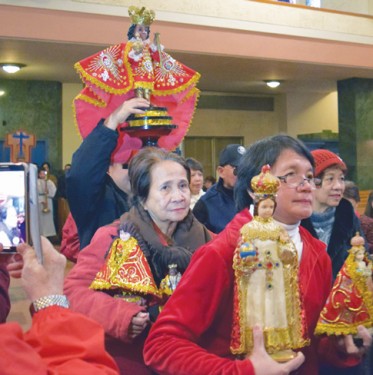
Panganiban, who is a cancer survivor, says that she always believes that Santo Niño has been there for her.
Nena Matela knows first-hand about the miraculous Santo Niño and has been promoting this devotion around Brooklyn and Queens.
“I was in an accident. I was hit by a car and I could not move,” she said. “I had to have a knee replacement five months ago and now they cannot believe that I’m teaching dancing and I’m dancing. Doctors tell me I recovered faster than others. I know that God is the reason for my being and he was able to heal me. … I have strong faith in Santo Niño.”
The Mass was followed by a joyous celebration in the parish’s school, which included cultural dances, food and other activities to celebrate the Holy Child.
Joy Lim, a Santo Niño devotee, said that this year her children were participating in the folk dance as a way of thanking Santo Niño for all the blessings He grants.
“He is a model in our family – how He grew from Santo Niño to Jesus Christ – we want our kids to see Him as a model,” she said. “We want them to know about the culture, the tradition, and especially the religion of the Filipino.”
Related
To see photos of other Santo Niño celebrations around the diocese, go to: Holy Child Feast in Carnarsie and St. Sebastian Celebrates Santo Niño.

